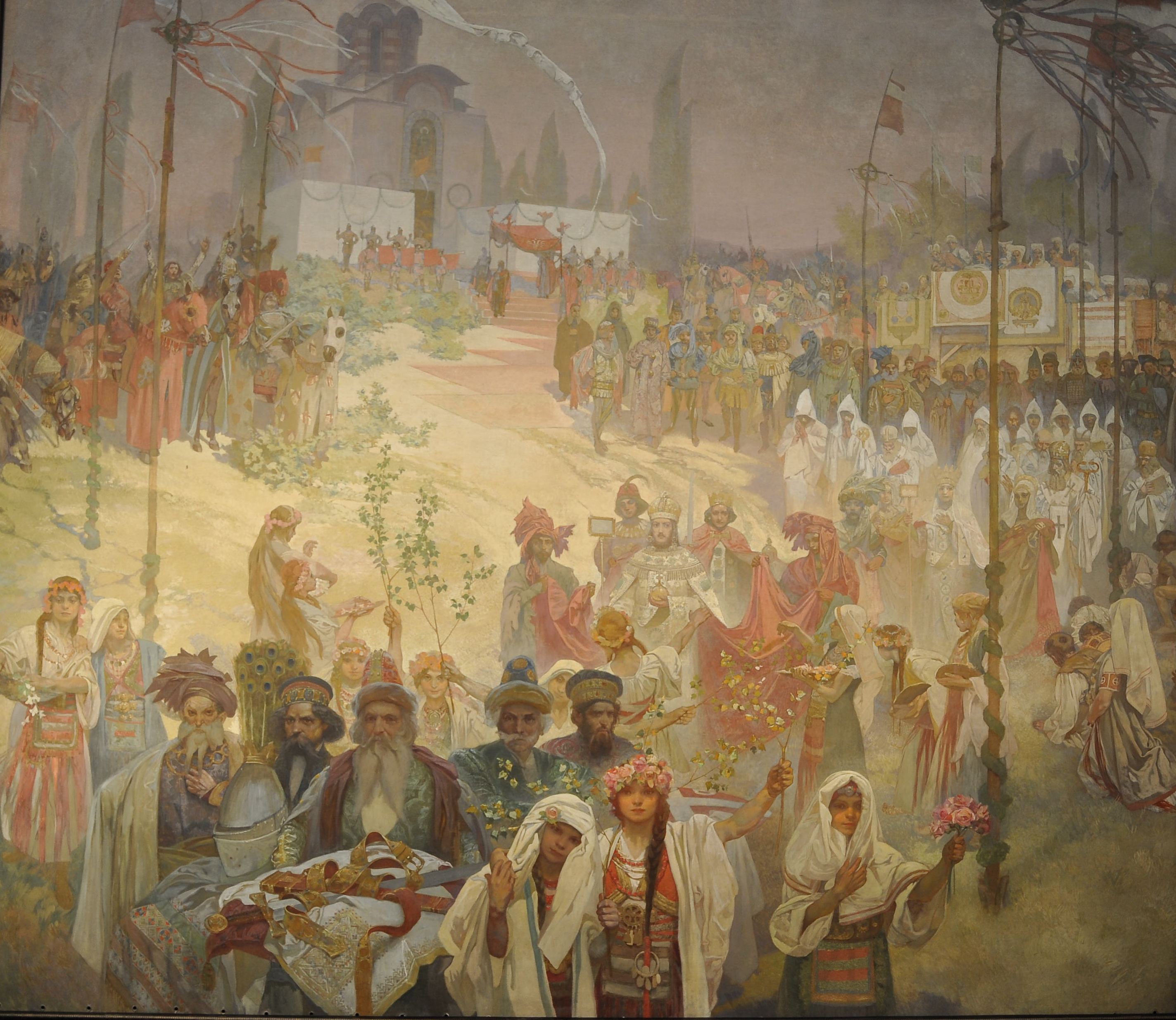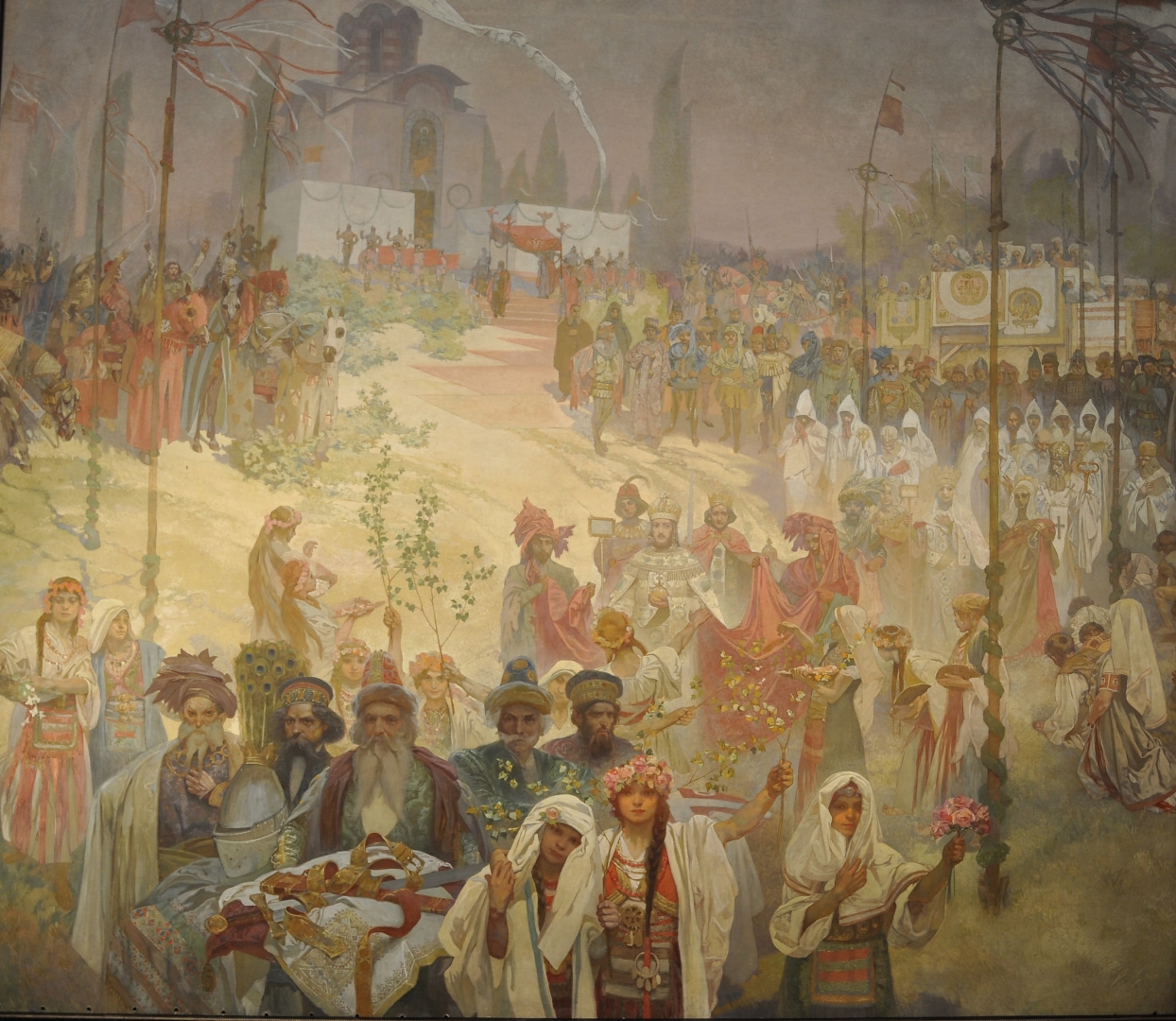THE CORONATION OF STEFAN UROŠ DUŠAN
It took a long time for the Serbian tribes to unite. They lived in valleys separated by high mountains and did not overthrow Byzantine rule until the end of the 12th century. Stefan Nemanja united most of the Serbian tribes in the Drina basin and Montenegro into a state that consolidated its position during the 13th and 14th centuries. Stephen IV Dušan incorporated additional territories into Serbia: southern Macedonia, Albania, Thessaly, the Belgrade area and others. He built a great empire that stretched from the Danube to the Gulf of Corinth. In 1349, he issued a Code, codifying the rights of Serbian feudal lords, enserfing their subjects and curbing the rights of free peasants.
In 1346 at Easter, Stephen IV. Dušan held a coronation ceremony in Skopje, where he was crowned Tsar of Serbs and Romans (Greeks). The painting represents the moments immediately after the ceremony. At the head of the procession, the nobles carry the tsar's helmet, shield and sword, while the chancellor has the state seal. The tsar, dressed in a lavish coronation robe, holds a sign of his power: a sceptre. The girls with the branches sprinkle flowers in front of him. In the tsar's footsteps follows Stephen V. Uroš, his son, who was awarded the title of king of all Serbian and coastal territories on that day. The Serbian patriarch walks close behind. The procession ends with priests, envoys from all significant European courts, and the nobility. Ladies in beautiful clothes stand on raised platforms at the temple and pay tribute to their new tsar knight.
The procession also includes an envoy of the Czech and Roman King Charles IV, who ended his written congratulations to tsar Dušan with the words: "I am happy to see that at this time the whole of Europe is in the hands of two Slavs."
A girl with a long braid and a flower crown, situated at the bottom centre, concludes the composition. Her figure is a typical example of Mucha's richly elaborate Art Nouveau style.

